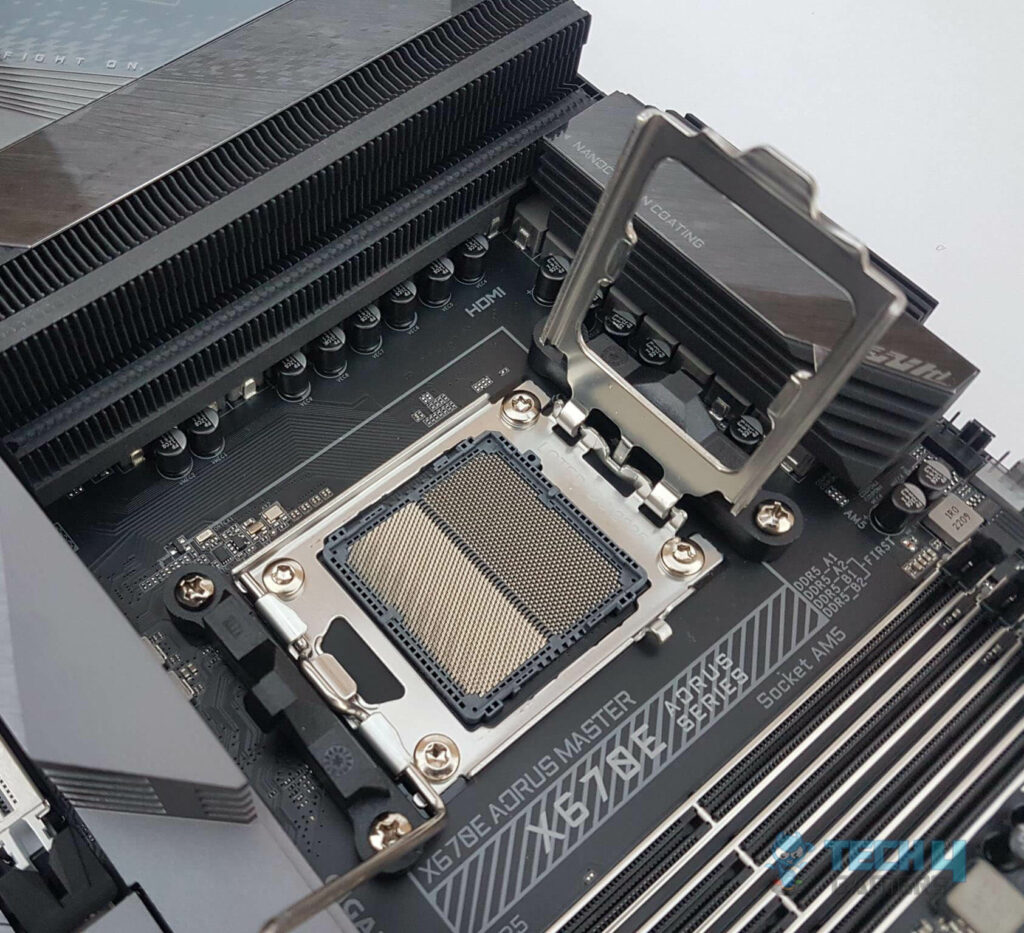With Intel and AMD releasing more and more powerful CPUs nearly every year, new sockets are also introduced to accommodate these CPUs. But what exactly are CPU sockets, and how do they work? Read on to find out.
Key Takeaways
- A CPU socket (or CPU slot) is a mount that houses the CPU and allows the CPU to communicate with the motherboard.
- There are three types of CPU sockets: LGA, PGA, and BGA.
- Sockets are named LGA #, PGA #, and BGA #, with # referring to the number of pins, holes, or solder balls.
What Are CPU Sockets?
A CPU socket, or a CPU slot, is a mount on computer motherboards that allows data and power transfer between the motherboard and CPU. CPU sockets allow easy installation of CPUs without soldering, allowing you to replace them easily. [1]
How Do CPU Sockets Work?
A CPU socket contains pins or holes on which the CPU is placed and a latch or a lever to lock the CPU in place. The CPU is placed on the socket, and the retention bracket is then placed over the CPU, and the lever is locked in place, allowing contact between the CPU and the socket.[2]

Types Of CPU Socket
There are three types of CPU sockets: LGA, PGA, and BGA:
- LGA Sockets: In LGA (Land Grid Array) sockets, the metal pins are located on the socket on the motherboard. The CPU has flat electric contact pads that connect to these pins. The primary advantage of LGA sockets is higher pin density and less cost[3].
- PGA Sockets: In PGA (Pin Grid Array) sockets, the pins are placed on the CPU, and the socket has holes with which the CPU aligns. PGA pins are thicker, more rigid, and easier to repair. The downside is that pin damage can be costly[4].
- BGA Sockets: The solder balls used in this design are arranged in a grid-like pattern and are placed on a chip carrier. However, as you may have guessed, it involves soldering the CPU on the socket. The advantages of BGA sockets include less heat conduction and space taken, plus better electricity conduction. Its disadvantages are difficult installation, and the solder balls used in BGA sockets are not very flexible[5].
Intel And AMD Sockets
Here’s a list of the most recent mainstream sockets from both CPU manufacturing giants:
| Manufacturer | Socket | Supported CPU Lineups | Supported Chipsets |
|---|---|---|---|
| Intel | LGA 1700 | ||
| Intel | LGA 1200 |
|
|
| Intel | LGA 1151 |
|
|
| AMD | AM5 (LGA 1718) | Ryzen 7000-Ryzen 9000 Series (Expected) | B650, B650E, X670, X670E (so far) |
| AMD | AM4 (PGA 1331) | Ryzen 1000-Ryzen 5000 Series | |
| AMD | AM3+ (PGA 942) |
|
970, 980G, 990X, 990FX |
Related Helpful Resources By Tech4Gamers:
References:
- Universitas Ubudiyah Indonesia. CPU Socket. Retrieved from: https://wiki.edunitas.com/IT/en/114-10/Socket_18123_eduNitas.html
- Matthew S. Smith. Intel LGA Socket Explained. Retrieved from: https://www.intel.com/content/www/us/en/support/articles/000056725/processors.html
- TE Connectivity. PGA SOCKETS. Retrieved from: https://www.te.com/usa-en/products/connectors/sockets/ic-sockets/pga-sockets.html?tab=pgp-story
- PCB Way. Ball Grid Array (BGA). Retrieved from: https://www.pcbway.com/blog/Engineering_Technical/Ball_Grid_Array__BGA_.html
Frequently Asked Questions
Intel has been using the LGA (Land Grid Array) socket design since 2004. The most recent one is LGA 1700, which has 1700 pins.
A CPU socket or CPU slot is a physical connector that allows the CPU to communicate with the motherboard. It does so through metal pins.
The three types of CPU sockets are LGA, PGA, and BGA. In LGA sockets, the pins for power and data transfer are on the motherboard. In PGA sockets, these pins are on the CPU; in BGA sockets, the pins (solder balls) are placed on a chip carrier.
Thank you! Please share your positive feedback. 🔋
How could we improve this post? Please Help us. 😔
Feedback By:
Michael Daniel
[Wiki Editor]
Ali Rashid Khan is an avid gamer, hardware enthusiast, photographer, and devoted litterateur with a period of experience spanning more than 14 years. Sporting a specialization with regards to the latest tech in flagship phones, gaming laptops, and top-of-the-line PCs, Ali is known for consistently presenting the most detailed objective perspective on all types of gaming products, ranging from the Best Motherboards, CPU Coolers, RAM kits, GPUs, and PSUs amongst numerous other peripherals. When he’s not busy writing, you’ll find Ali meddling with mechanical keyboards, indulging in vehicular racing, or professionally competing worldwide with fellow mind-sport athletes in Scrabble at an international level. Currently speaking, Ali has completed his A-Level GCEs with plans to go into either Allopathic Medicine or Business Studies, or who knows, perhaps a full-time dedicated technological journalist.
Get In Touch: alirashid@tech4gamers.com


 Threads
Threads
![Can You Use A Monitor Without PC? [SOLVED] Can You Use A Monitor Without PC?](https://tech4gamers.com/wp-content/uploads/2022/09/Can-You-Use-A-Monitor-Without-PC-218x150.jpg)


![Is A Laptop Considered A PC? [Explained] Is Laptop a PC](https://tech4gamers.com/wp-content/uploads/2022/09/Is-Laptop-a-PC-218x150.jpg)